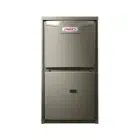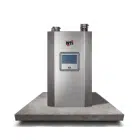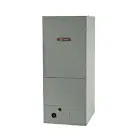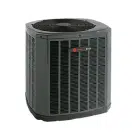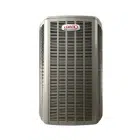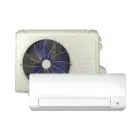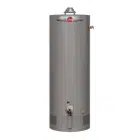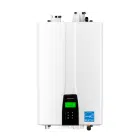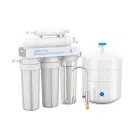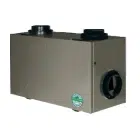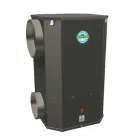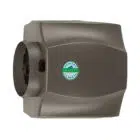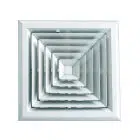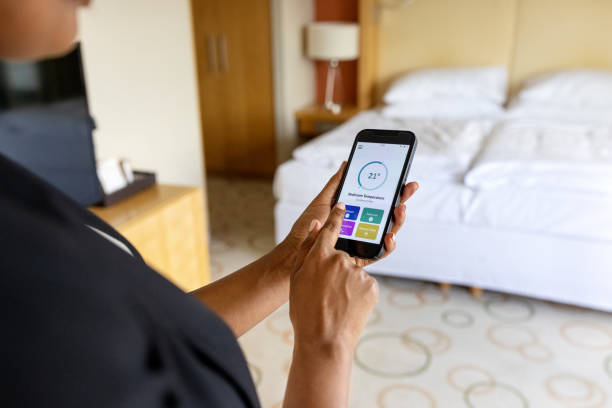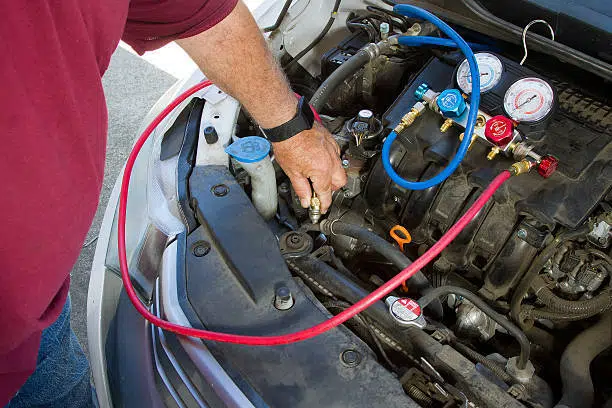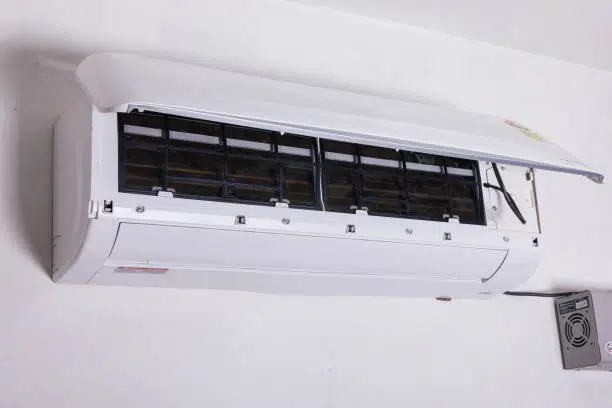
Table of Contents
Your air conditioner is on, the fan is running, but the air coming out isn’t cold. This can be frustrating, especially during the peak of summer when you rely on your AC to keep your home comfortable. If the fan is working but there’s no cooling, it’s a sign that one or more critical components of your HVAC system aren’t functioning properly.
Understanding why this happens is crucial because ignoring it can lead to more severe problems, such as compressor failure or increased energy bills. In this guide, we’ll explore why AC is not working but the fan is running, what you can do to troubleshoot the issue, and when it’s time to call an HVAC professional.
How Your Air Conditioner Works
To better understand why your AC not working but the fan is running, let’s break down the basic components of an air conditioning system and how they function together:
- Compressor: The heart of your AC system. It pressurizes and circulates refrigerant between the evaporator and condenser coils.
- Condenser Coil: Located in the outdoor unit, it releases heat absorbed from inside your home to the outside air.
- Evaporator Coil: This is inside your indoor unit and absorbs heat from the air inside your home, cooling it down.
- Refrigerant: A chemical that cycles through the system, transferring heat between the indoor and outdoor units.
- Fan Motors: The system has at least two fans—one in the outdoor unit that helps dissipate heat from the condenser coil and one in the indoor unit that circulates cooled air throughout your home.
When your AC is working correctly, warm air from your home is pulled into the system, cooled by the evaporator coil, and then recirculated back into your living space. The condenser coil, compressor, and refrigerant work together to remove heat from the air. If any part of this cycle is disrupted, you’ll notice issues like warm air blowing from the vents or AC not working but the fan is running.
If your fan is still running but your AC isn’t cooling, it means the fan motor is operational, but something else in the system is preventing effective cooling.
Why Is the Fan Running but the AC Isn’t Cooling?
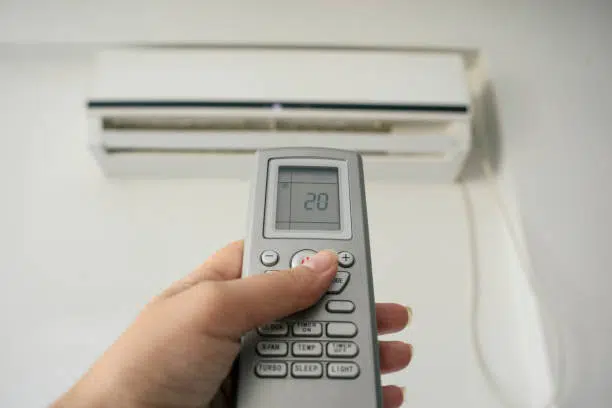
Several potential issues could cause your AC not working but the fan is running. Here are the most common reasons for AC problems:
1. Compressor Issues
Your AC compressor is responsible for pressurizing the refrigerant and moving it through the system. If it fails, the refrigerant won’t circulate, and no cooling will occur. Here’s how to identify compressor-related issues:
- Clicking or buzzing sounds: If you hear these noises but the AC doesn’t cool, your compressor may be struggling to start.
- No humming sound: Normally, when the compressor is running, you should hear a low hum. If there’s silence, the compressor may not be functioning at all.
- Tripped circuit breaker: A faulty compressor can draw too much power and cause the breaker to trip.
If the compressor is faulty, you’ll need a professional HVAC technician to diagnose and repair or replace it.
2. Failed Start Capacitor or Contactor
The start capacitor provides the initial jolt of electricity needed to power up the compressor. If it’s bad, your compressor won’t start even though the fan runs. Signs of a bad capacitor include:
- AC struggling to start or randomly shutting off
- A clicking sound but no compressor operation
- A bulging or leaking capacitor
A faulty contactor can also prevent power from reaching the compressor. If the capacitor or contactor is the problem, they must be replaced by a professional.
3. Low or Leaking Refrigerant
Refrigerant is crucial for cooling. If your system has a refrigerant leak or the levels are low, your AC won’t be able to remove heat effectively. Signs of low refrigerant include:
- Warm air from vents
- Ice forming on refrigerant lines
- Hissing sounds (indicating a leak)
A refrigerant issue requires professional repair, as adding more refrigerant without sealing the leak is only a temporary fix.
4. Dirty or Blocked Condenser Coil
The outdoor condenser coil is responsible for releasing heat absorbed from your home. If it’s covered in dirt, dust, or debris, it won’t be able to dissipate heat properly, causing the AC to run inefficiently or shut down the compressor to prevent overheating. Signs include:
- AC struggling to cool the home
- Warm air blowing from vents
- The outdoor unit feeling excessively hot
Cleaning the condenser coil regularly can help prevent this issue.
5. Faulty Thermostat
If the thermostat isn’t working properly, it may not signal the AC to start cooling. Check that your thermostat:
- Is set to Cool mode
- Has the correct temperature setting
- Has fresh batteries (if applicable)
A malfunctioning thermostat may need to be recalibrated or replaced.
DIY Troubleshooting: What You Can Check Before Calling a Professional
Before calling an HVAC technician, there are a few things you can check:
- Check the Thermostat Settings – Ensure it’s set to Cool and the temperature is lower than the room temperature.
- Inspect the Air Filter – A dirty filter can block airflow and cause the system to overheat.
- Examine the Outdoor Unit – Remove any dirt or debris that may be obstructing the condenser coil.
- Check for Ice Buildup – Ice on refrigerant lines may indicate a refrigerant issue or poor airflow.
- Listen for Unusual Noises – Clicking or buzzing sounds could point to electrical problems.
Reset the System – Sometimes, turning the AC off and on at the breaker panel can resolve minor glitches.
How We Can Help at HVAC Service Solutions
At HVAC Service Solutions, we specialize in diagnosing and repairing air conditioners that aren’t cooling. Our certified technicians can:
- Perform a thorough system inspection
- Repair or replace faulty compressors, capacitors, and other components
- Recharge refrigerant and fix leaks
- Optimize your system for peak efficiency
We provide fast, reliable service to keep your home cool and comfortable. If your AC is not working but the fan is running, don’t wait—contact us today!
Conclusion
If your AC is not working but the fan is running, there could be several underlying causes, from a faulty compressor to low refrigerant levels or a dirty condenser coil. Troubleshooting common issues like thermostat settings, air filters, and outdoor unit obstructions can sometimes resolve the problem. However, more serious issues like compressor failure or refrigerant leaks require professional attention. Addressing the issue early can help you avoid costly repairs and keep your home comfortable during hot weather.
FAQs
1. Why is my AC fan running but not cooling?
If your AC is not working but the fan is running, the issue could be a faulty compressor, low refrigerant levels, a dirty condenser coil, or a bad capacitor. The fan running indicates the system has power, but one of the cooling components isn’t functioning properly. Checking the thermostat settings, air filter, and outdoor unit can help diagnose the problem.
2. How do I reset my AC if the fan is running but the air isn’t cold?
To reset your AC:
- Turn off the thermostat.
- Locate the circuit breaker for your AC unit and switch it off.
- Wait for 5–10 minutes.
- Turn the breaker back on.
- Set your thermostat to “Cool” and lower the temperature.
If your AC still doesn’t cool, there may be a deeper issue requiring professional service.
3. Can a dirty air filter cause my AC to stop cooling but keep the fan running?
Yes, a clogged air filter restricts airflow, leading to frozen evaporator coils or overheating, which can shut down the cooling process. The fan may continue running, but the AC won’t effectively cool your home. Replacing or cleaning the filter every 1–3 months can prevent this issue.
4. How can I tell if my AC compressor is broken?
Signs of a bad compressor include:
- Warm air blowing from vents
- Clicking or buzzing sounds from the outdoor unit
- Circuit breaker tripping frequently
- AC unit running but not cooling
A faulty compressor requires professional repair or replacement.
5. What should I do if my AC has a refrigerant leak?
If you suspect low refrigerant due to ice buildup on the refrigerant lines or hissing noises from the unit, call an HVAC technician. Refrigerant leaks not only prevent cooling but can also damage your compressor if left unaddressed.
6. Can a bad capacitor cause the AC to stop cooling but keep the fan running?
Yes, the capacitor provides the initial power surge to start the compressor. If it fails, the compressor won’t turn on, but the fan may still run. A technician can replace a faulty capacitor easily.
7. Why does my AC work sometimes but not always?
Intermittent cooling could indicate:
- A failing capacitor
- Low refrigerant levels
- A faulty thermostat
- An overheating compressor
If the problem persists, schedule an HVAC inspection.
8. Is it safe to run my AC if it’s not cooling?
It’s best to turn off your AC if the cooling function isn’t working. Running it with a faulty compressor or low refrigerant can cause further damage and increase energy costs.
9. How much does it cost to repair an AC that’s not cooling?
The cost depends on the issue:
- Capacitor replacement: $100–$300
- Refrigerant refill (if no leaks): $200–$600
- Compressor repair/replacement: $1,000+
Regular AC maintenance can prevent expensive repairs.
10. When should I replace my AC instead of repairing it?
Consider replacing your AC if:
- It’s over 10–15 years old
- It needs frequent, costly repairs
- Your energy bills are increasing
- It uses outdated refrigerant (R-22)
A new, energy-efficient unit can improve cooling performance and lower long-term costs.
Share

